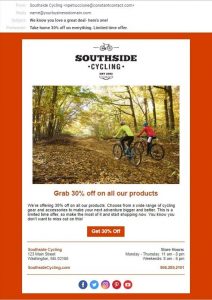You can dedicate countless hours and huge budgets to drive more traffic to our websites but too many website owners don’t pay enough attention to what happens once the traffic lands on their website. It can feel like once the traffic lands on your site that your job is done but in truth that’s when the real work begins as you need to ensure that your visitors engage with the website otherwise it doesn’t matter how high your traffic levels are. Here are 5 ways to increase the engagement on your website and ultimately convert your visitors into customers.
Keep It Simple
This may seem like an obvious suggestion but with all of the added options available within modern web design it’s worth a reminder not to overdo it. If a website is too busy it can leave users feeling distracted and confused and with online consumers being notoriously fickle this can be a big problem.
It can be tempting to try and innovate and create a design to make you stand out from the crowd. However you should strive to keep your design simple by using a familiar navigation menu, users will expect it to perform the same as other well known websites and if they have to work it out they might opt out and visit another website instead.
It’s important to keep your content simple as well. Avoid long paragraphs and too much content on each page and include a clear call to action telling the user the action that you want them to perform. Good usability is all about taking as much of the thinking process out of the equation for the user. Online consumers are much more impatient and easily distracted than traditional shoppers so you need to get them from the landing page to the checkout/signup in as few clicks as possible.
Internal Link Structure
Internal links are important because they make it easier for users to navigate the website and they are useful in terms of SEO too as internal links are the one place where it’s still ok to use keyword rich anchor text and they also allows pages to pass authority to one another throughout the website. You should ensure that your website has a strong internal linking structure which will allow users to find other helpful pages easily without having to go back to the main navigation, footer menu or a sitemap.
Reduce Page Load Speed
One of the biggest causes of people leaving a website straight away is a page taking too long to load. Your page load speed can also impact on your rankings so this is both a usability and SEO issue that should be addressed to improve your website’s overall performance.
Improving the load speed of your website is a pretty complex procedure as there are a lot of different issues that can contribute to it. The best thing to do is visit Google Search Console and under ‘Other Resources’ you will find a section named ‘PageSpeed Insights’ which will analyse your website’s speed and provide you with actionable ways to improve it.
Call To Action
Calls to action make it clear what you want a user to do on a given page on a website. At the end of the day the function of any website is to get your visitors to perform an action and a call to action simplifies this process.
Depending on the industry you operate in a call to action can mean a wide range of things but no matter what action you want you visitors to perform you need to ensure that your call to action stands out from the space around it and that it is positioned to be within their eye line. The tricky part is making sure that your call to action stands out on the page while still looking like it belongs there. If a call to action icon looks out of place and clustered it can become more distracting than welcoming and then you’re back to the busy looking page problem we covered earlier.
The same principal applies to working out the size of the call to action, if it’s too small people won’t notice it and if it’s too big it will dominate the page and the rest of the content may get ignored. Calls to action may appear to be simple things, but there is a fine balance to getting them right.
Split Testing
Split or A/B testing is a great way to gather information about the usability of your website and
determine what your visitors like as well as what is preventing them from performing the actions that you want them to make. It also allows you to test alternative versions of pages on your website, so for example you could test a new call to action or sign up form on a particular page on your website and then analyse how your users interacted with it.
Your analysis of the data that the split testing produces is paramount as you need to understand the impact of the changes you make, both negatively and positively. Before you even begin the test you should identify areas that you want to investigate. For example, if you want to increase enquiries you can alter the size of the enquiry call to action icon and change the text/colour within it to find out if that will impact on how many people click and engage with it.
Take note of the data your test produces and try to implement all of the positives into the layout of your website and you will be a lot closer to giving your visitors what they want which will go a long way to increasing the engagement on your website.
Digital & Social Articles on Business 2 Community(138)






